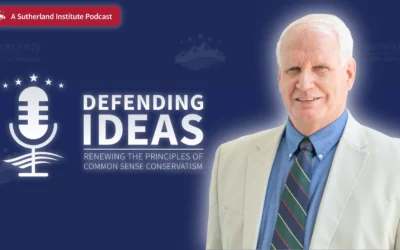
Written by Christine Cooke Fairbanks
July 29, 2023
Originally published in The Salt Lake Tribune.
As Utah leaders seek ways to improve upward mobility for our state’s youth, recent data sheds light on the importance of the family.
Educational outcomes are better when there are more married parents in a school district — even when accounting for race or parental education levels. Utah leads the nation in rate of children being raised in married couple households, at 82%. And Utah’s high school graduation rates and NAEP scores are above average despite having one of the lowest per-pupil spending amounts in the nation.
The state’s impressive correlation between family structure and education outcomes should prompt policymakers who care about upward mobility to pay close attention to the strength and stability of Utah’s families.
“The Utah Family Miracle,” a new joint report from Sutherland Institute and the Institute for Family Studies, describes that connection and provides a range of policy recommendations to strengthen and support Utah families.
In particular, the report shows that students would benefit from greater awareness of the “success sequence,” the name for a data-backed series of steps that led to this achievement: 97% of millennials avoided poverty in adulthood if they did three things in sequence: graduated from high school, found any full-time employment, and had children only after getting married.
Teaching these facts about the success sequence in schools is a prudent first step to help students from every background achieve greater success in life.
Ian Rowe, an upward mobility scholar at the American Enterprise Institute and a charter school executive, tells a story about wanting to bring the success sequence data to his network of schools in the Bronx. He was told that teaching it would insult and offend students whose parents did not make those choices.
Instead, Rowe learned that students and parents in poverty wanted the information shared so students could decide what to do with it themselves. In other words, the success sequence is not about the family a child comes from, but the family that they choose to form.
This experience exemplifies how all students regardless of background would benefit from hearing about the success sequence and choosing its three steps. Data show the benefits of following the success sequence hold true regardless of race or income level during childhood.
However, teaching the success sequence — while necessary — is not sufficient on its own.
For instance, certain individuals have more structural obstacles than others in making choices along the success sequence path. Even the many people who are persuaded that each of the steps is the best choice may find it difficult to do because of the cultural or social dynamics surrounding them.
That is why advocates of the success sequence must routinely speak about the importance of strengthening institutions that are well positioned to help students make these good decisions — like family, churches, schools, government and voluntary associations.
Good-faith policymakers should seek policies that help students graduate from high school on time, promote an economy where people can find steady work, and support family formation in the best time and context.
Teaching the success sequence in school does not preclude public policy efforts to make those steps easier to accomplish. Public discussion via schools about the data may encourage policymakers to look at policies that positively impact those trying to follow the success sequence.
Reasonable people would agree that simply teaching the success sequence does not guarantee students will follow it. But not teaching it guarantees a risk that some never discover the success sequence in time to apply it.
How to logistically bring the success sequence to students is a complex question with a variety of opportunities, including through school administrators, district leaders or state policymakers. But given the overwhelming evidence of the relationship between family structure, education, work and upward mobility, policymakers should seek to bring this information to students before another generation starts making life-changing decisions without it.
More Insights
Read More
Protecting property rights against government overreach
While governments can continue to regulate land use, these regulations and fees must be justified by a government interest and proportional to the effect of the development’s impact on that interest.
Do we need to care about the Utah State Board of Education?
For any Utah voters who also feel like K-12 public education is headed in the wrong direction, learning about the candidates running for a seat on the Utah State Board of Education (USBE) is a wise choice this election season.
Defending education choice the right way
Education choice has exploded in popularity across the nation in recent years. So why does it remain a contentious point of debate in some parts of the country?


